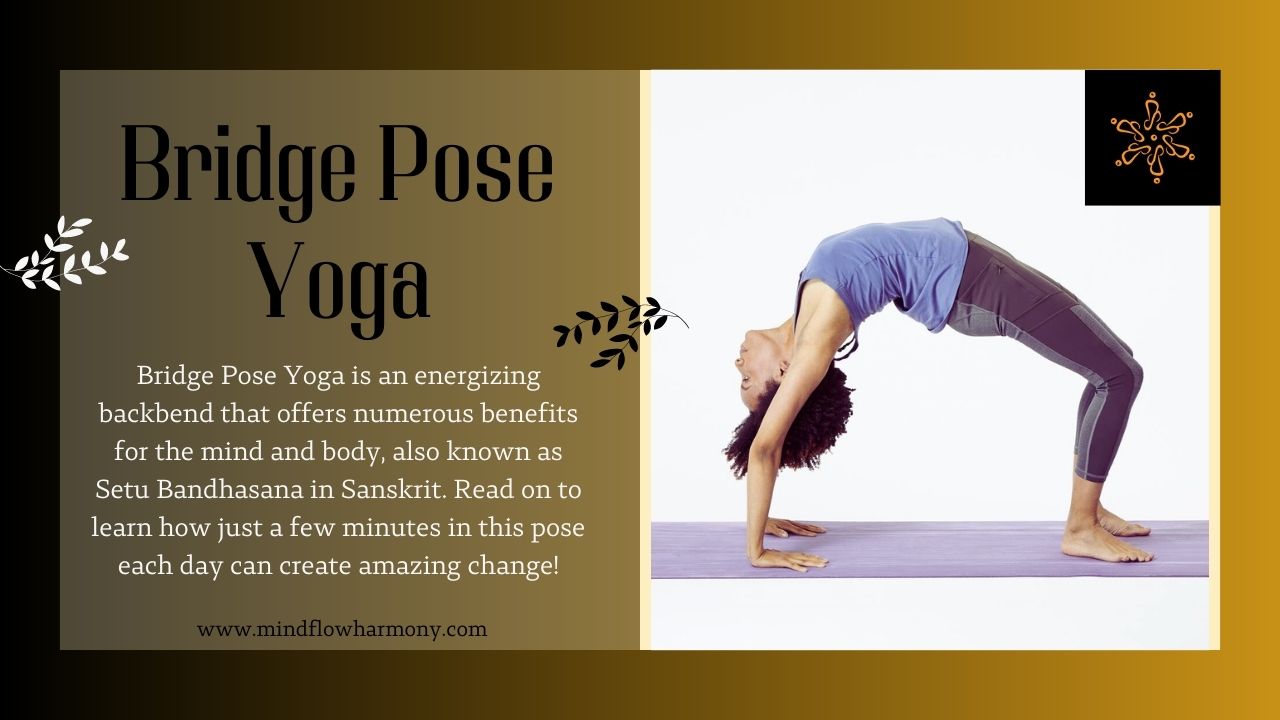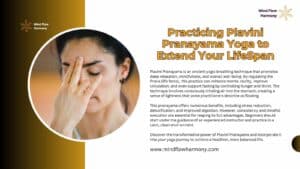Bridge Pose Yoga can be incorporated into your yoga practice in a variety of ways. You can start with the bridge pose to warm up before your exercise, or use it as a relaxing pose at the end. You can also use it as a preparation for deeper backbends, such as Wheel Pose, by holding the pose for longer and exploring variations.
Bridge Pose Yoga is an energizing backbend that offers numerous benefits for the mind and body, also known as Setu Bandhasana in Sanskrit. Read on to learn how just a few minutes in this pose each day can create amazing change!
Table of Contents
Introduction to Bridge Pose Yoga
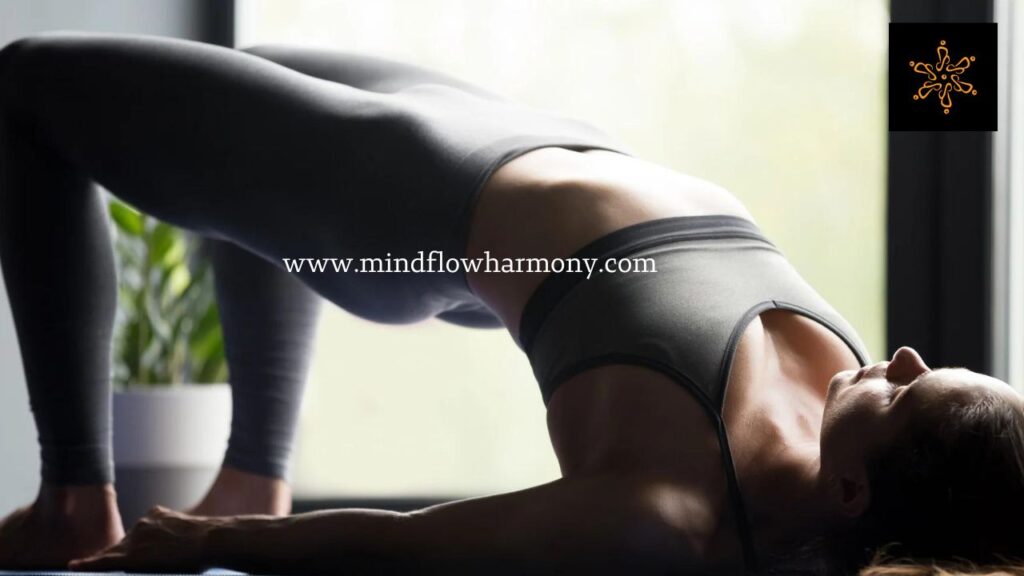
Bridge Pose Yoga is a gentle yet powerful backbend that is accessible to yogis of all levels. It involves lying on your back and lifting your hips up towards the ceiling, creating a bridge-like shape with your body. This pose is often used as a preparation for deeper backbends, such as Wheel Pose, and can also be used as a restorative pose in a gentle yoga practice.
Bridge Pose Yoga offers a variety of benefits for both the mind and body. This pose helps make your back, glutes, and thighs strong and stretches your chest, neck, and spine. It also helps reduce discomfort in your lower back and hips, which is beneficial if you spend long periods sitting or standing.
Mentally, Bridge Pose Yoga can help to calm the mind and reduce stress and anxiety. As a backbend, this pose is believed to open the heart center and promote feelings of joy and happiness. It can also be used as a grounding pose, helping to bring us back into our bodies and out of our heads.
So, what are you waiting for? grab your yoga mat and get into bridge pose. Feel the strength building in your legs, core, and glutes as you lift your hips up high
Also Read About Virabhadrasana Yoga Pose -Benefits, Variations and Precautions
How to practice Bridge Pose Yoga

To practice Bridge Pose Yoga, follow these steps-
- Start by lying on your back with your knees bent and feet hip-width apart.
- Place your arms by your sides with your palms facing down.
- Inhale and press into your feet, lifting your hips up towards the ceiling.
- Keep your knees directly above your ankles and engage your glutes and thighs to lift your hips higher.
- Stay in the pose for several breaths, then exhale and slowly lower your hips back down to the mat.
If you want to learn more about Bridge Yoga pose , then you have to join our Yoga Teacher Training Course in Rishikesh
- 100 Hour Yoga Teacher Training in Rishikesh
- 200 Hour Yoga Teacher Training in Rishikesh
- Yin Yoga Teacher Training in Rishikesh
Precautions and modifications for Bridge Pose Yoga
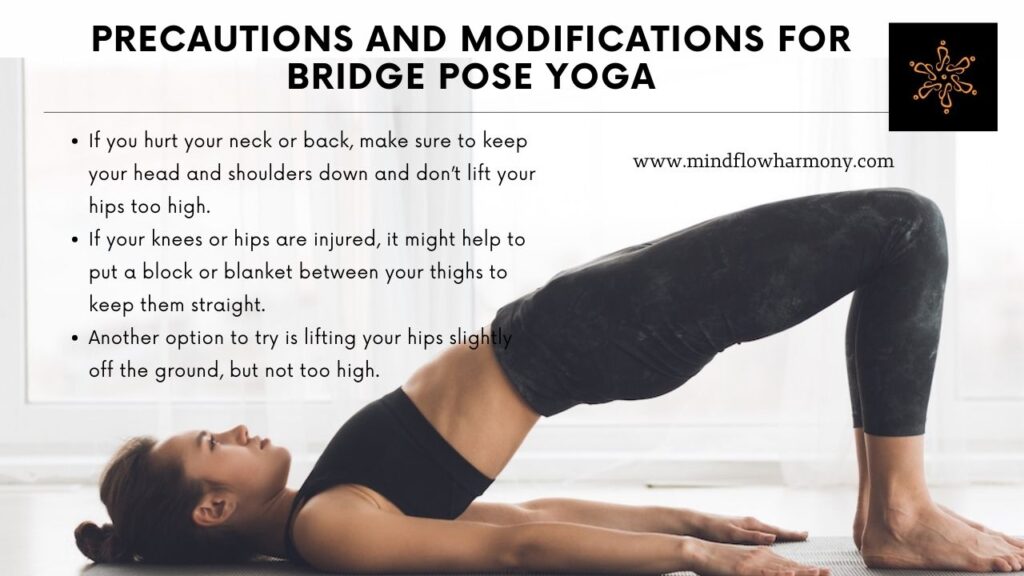
While Bridge Pose Yoga is generally a safe pose, there are a few precautions and modifications to keep in mind.
- If you hurt your neck or back, make sure to keep your head and shoulders down and don’t lift your hips too high.
- If your knees or hips are injured, it might help to put a block or blanket between your thighs to keep them straight.
- Another option to try is lifting your hips slightly off the ground, but not too high.
Also Read About: Vipassana Yoga Retreat In Rishikesh: Finding Inner Peace in the Himalayas
Introduction to Supported Bridge Pose
Bridge pose strengthens your core, opens your chest, and enhances your flexibility. By holding this pose for just a few minutes a day, you’ll improve your posture, relieve back pain, and boost your mood and energy levels. Supported bridge pose takes it to the next level, allowing you to deepen the stretch and find greater comfort and stability.
Benefits of Bridge Pose Yoga
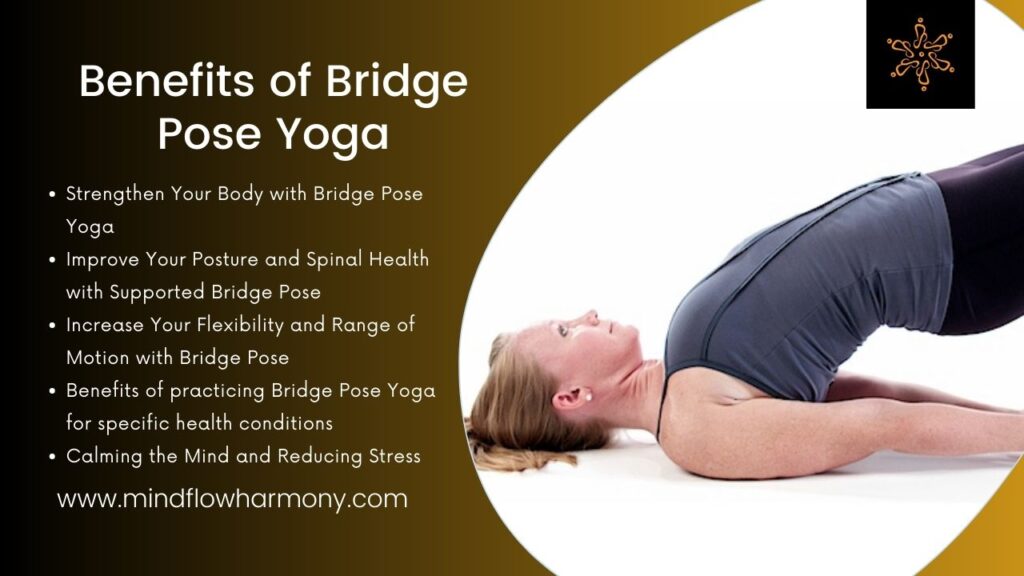
- Strengthen Your Body with Bridge Pose Yoga
- Bridge pose yoga is one of the best ways to strengthen and energize your body When you lift your hips up high, you’re activating your buttocks, the muscles at the back of your thighs, and your core muscles. Holding the pose helps build endurance in your back, abs, and legs.
- Your posture will improve, back pain will decrease, and you’ll have an easier time with other exercise and activities.
- Not only that, but bridge pose increases your flexibility and range of motion. As your hips open and spine arches, tight areas are released. This frees up your body to move more freely. Tight hip flexors and hamstrings are no match for the mighty bridge!
- Using props like yoga blocks under your lower back provides extra support so you can hold the pose longer. The blocks help open your chest and front body, allowing for deeper breathing. Your spine will thank you for the added comfort and stability.
- Aim for 2-3 rounds of bridge pose, holding each for 1 to 3 minutes. Start with the supported variation if needed, and over time, you’ll build up strength and flexibility to hold the full pose. Practice 3 times a week for maximum benefit.
- Bridge pose is rejuvenating and empowering. Your body and mind will thrive with a regular yoga practice focused on backbends like this one. Open your heart, strengthen your core, and move with greater ease – bridge pose has so much to offer! Now get on your mat and discover its amazing benefits.
- Improve Your Posture and Spinal Health with Supported Bridge Pose
- Bridge pose is one of the best yoga poses for giving your spine some TLC. By gently arching your back, bridge pose helps correct poor posture, relieve back pain, and make your spine stronger and more flexible.
- When you do bridge pose using props like yoga blocks, you get even more benefits. The blocks support your lower back, allowing you to relax into the stretch without strain. This helps open your chest and front body, increasing your range of motion. The extra support also makes bridge pose accessible to people of all fitness levels.
- To do supported bridge pose, place two yoga blocks at the lowest or second-lowest height about six inches apart on your mat. Lie face up between the blocks with arms at your sides, palms down. Bend your knees and place your feet flat on the floor, shoulder-width apart. On an inhale, lift your hips up while squeezing your glutes. Roll your shoulders back and slide the blocks under the base of your spine. Relax your arms overhead. Breathe steadily for 2 to 3 minutes.
- Using props in bridge pose helps stabilize your body, allowing you to hold the stretch longer and giving you greater benefits. Your spine will thank you, and you’ll stand up straighter and taller! Practice supported bridge pose 2-3 times a week to improve your posture, relieve back pain, and build core strength. Why wait? Your amazing spine is waiting to feel better.
- Increase Your Flexibility and Range of Motion with Bridge Pose
- You’ll be amazed at how Bridge pose can boost your flexibility and range of motion. This heart-opening backbend does wonders for your spine and hips.
- Open Your Heart: Bridge pose flexes your thoracic spine, the part of your back between your shoulder blades. This area often gets stiff from sitting, so arching it feels incredibly freeing. As you lift your hips, feel your chest expanding and your heart center blossoming open. Take a few deep breaths here and embrace the energy flowing through your upper body.
- Release Your Hips: Your hip flexors, the front of your hips where your legs attach, also get tight from prolonged sitting and inactivity. Bridge pose provides a deep hip flexor stretch that can help relieve lower back pain and improve your posture. Roll your hips open and let gravity gently traction your hip flexors apart. Stay here as long as you like, rocking side to side to massage your lower back muscles.
- Go Deeper with Props: For even more intense hip and heart opening, place a yoga block under your sacrum, the triangular bone at the base of your spine. The added height will let you sink deeper into the pose. You can also try using a bolster, pillows, or folded blankets for support. Start with a higher prop and slowly work your way down as your flexibility improves.
- Bridge pose is a key part of any yoga practice, so aim for 2-3 times a week. Be gentle and listen to your body. Over time, you’ll gain more and more mobility in your spine and hips. Your heart will thank you for the openness and release that Bridge pose provides! Keep practicing and enjoy exploring your new range of motion.
- Benefits of practicing Bridge Pose Yoga for specific health conditions
- Bridge Pose Yoga can be beneficial for a variety of health conditions, including anxiety, depression, and insomnia. As a backbend, this pose can help to open the heart center and promote feelings of joy and happiness. It can also be used as a grounding pose, helping to bring us back into our bodies and out of our heads.
- Calming the Mind and Reducing Stress
- If you are experiencing stress or anxiety, incorporating Bridge Pose Yoga into your daily routine can be a helpful tool. This pose can help to calm the mind and reduce feelings of tension and anxiety. Try practicing Bridge Pose Yoga for a few minutes each day, focusing on your breath and allowing yourself to release any tension in the body.
Also Read About This Blog: Yoga Nidra For Sleep And Anxiety | Best Practice, Benefits
Common mistakes to avoid in Bridge Pose Yoga
One common mistake in Bridge Pose Yoga is lifting the hips too high, which can cause strain in the lower back. It is important to engage the glutes and thighs to lift the hips, rather than relying solely on the lower back muscles. Another common mistake is letting the knees splay out to the sides, which can cause strain on the hips. To avoid this, keep your knees directly above your ankles and engage your inner thighs.
Duration and Frequency of Bridge Pose Yoga
It’s best to start slowly and avoid forcing your body into the position. When first starting out, hold the pose for 1 to 2 minutes, then slowly build up as your body adapts. There’s no need to rush – listen to your body and only hold the pose as long as feels comfortable for you. Gradually progressing in small increments is the key.
Incorporating Bridge pose into your regular yoga practice 2-3 times a week is ideal. You can do it as a warm-up, during your main practice, or as a rejuvenating stretch afterwards. On your “off” days, you might do a shorter hold, maybe 30-60 seconds. The important thing is to practice consistently to increase your flexibility and range of motion over time.
Should any discomfort arise, don’t hesitate to come out of the pose. You can always try again another day. If you have any injuries or health conditions, check with your doctor first before practicing Bridge pose.
Also Read This Blog: What is Ashtanga Yoga and Explain in Detail?
Can Bridge Pose be Practiced Daily?

You absolutely can practice Supported Bridge pose daily if you listen to your body and build up gradually. This energizing backbend provides so many benefits, you’ll want to do it often!
If at any time Bridge pose causes pain or discomfort, come out of the pose immediately. You can always try again another day. It’s best to practice this pose when your body feels warm and energized. If you feel excessively tired, skip it or opt for a restorative yoga practice instead.
For the most benefits, practice Supported Bridge along with other back-bending and hip-opening poses like Cobra, Locust, and Seated Twist. This helps create balance in your practice and prevents your body from getting too accustomed to any one pose.
Conclusion
Go ahead, the benefits of this pose are truly amazing for both your body and mind. With regular practice of Supported Bridge Pose, even just a few minutes a day, you’ll start to notice back tension melting away, your spine gaining flexibility, and an overall sense of vitality.
A few minutes a day can provide huge rewards. This energizing backbend will open your heart, expand your chest, and fill your body with a surge of positivity.
Bridge pose is calling your name – will you answer? The time is now to roll out your mat and reap the rewards of this simple yet powerful pose.

